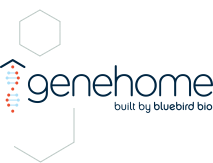

BETA-THALASSEMIA TREATMENTS
Prenatal Screening and Genetic Counseling
Because beta-thalassemia is a genetic diseaseGenetic diseasea disease that is caused by a genetic change, it can be identified and diagnosed through prenatal screening. This can provide early diagnosis and allow people to better understand how beta-thalassemia can be managed. They may also be recommended to a genetics counselor who can help screen other family members and identify a match for a stem cell transplant if needed.
Gene Therapy
Similar to a donor stem cell (or allogeneic) transplant, gene therapy is a treatment option that has the potential to treat beta-thalassemia in some patients. Unlike a stem cell transplant, however, gene therapy uses a patient's own cells. This type of therapy has the potential to treat the disease at the genetic level.
There are 2 main types of gene therapy: gene addition and gene editing.
GENE ADDITION
In gene addition, copies of functional genes are added to a cell to help do the work of a defective gene. The addition of functional genes can take place either inside (in vivo) or outside of the body (ex vivo).
GENE EDITING
In gene editing, targeted breaks are created in DNA, with or without instructions for how to repair the break. The goal of these breaks is to disrupt or correct the function of a gene.
Keep the Conversations Going
As the understanding of beta-thalassemia evolves and new treatment options are developed, staying informed can give you the information you need to have more meaningful conversations with your doctor about living with beta-thalassemia, your long-term goals, and evolving options.
 This website is developed by bluebird bio, Inc. and is intended for residents of the United States who are 18 years and older.
This website is developed by bluebird bio, Inc. and is intended for residents of the United States who are 18 years and older. 
